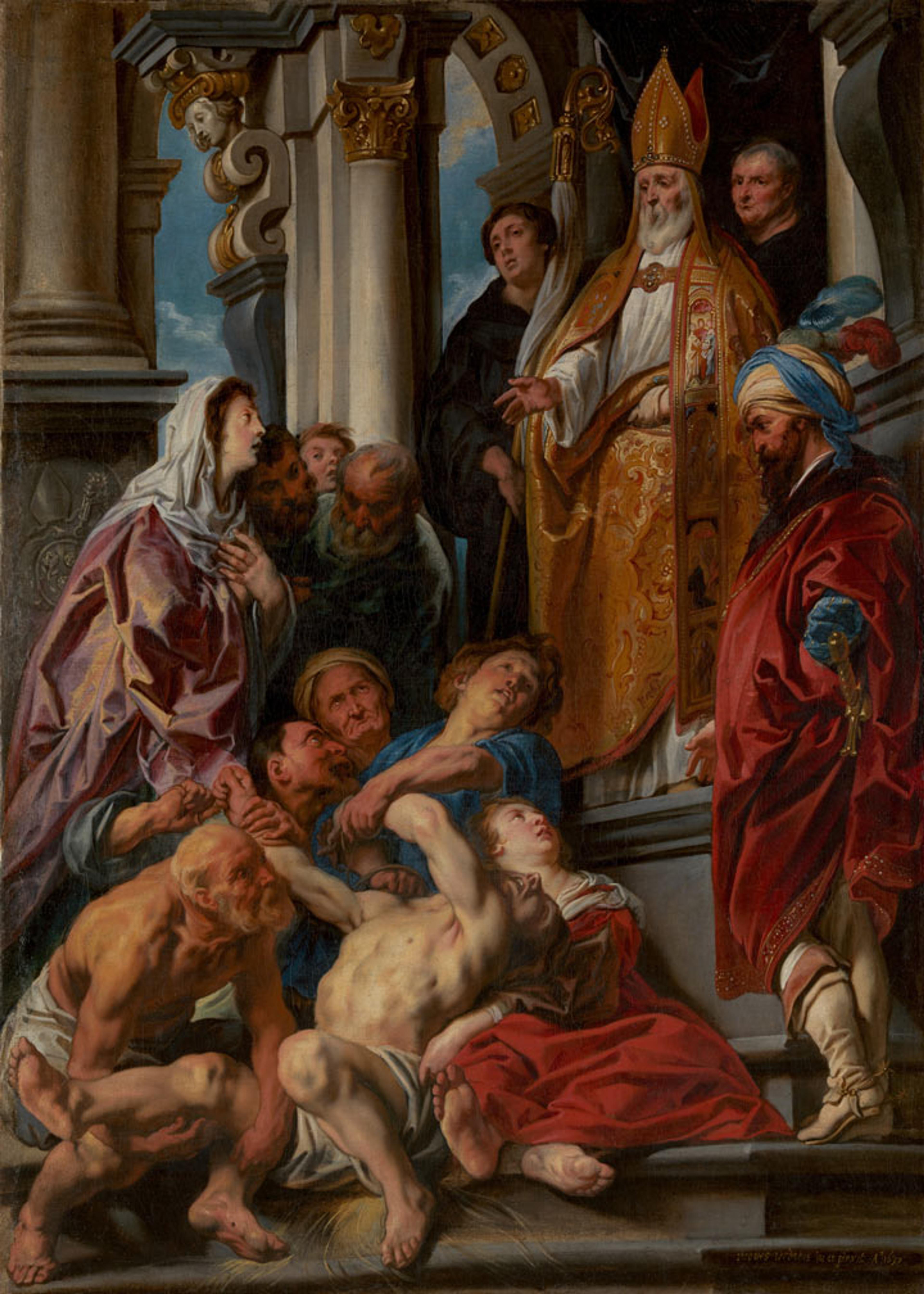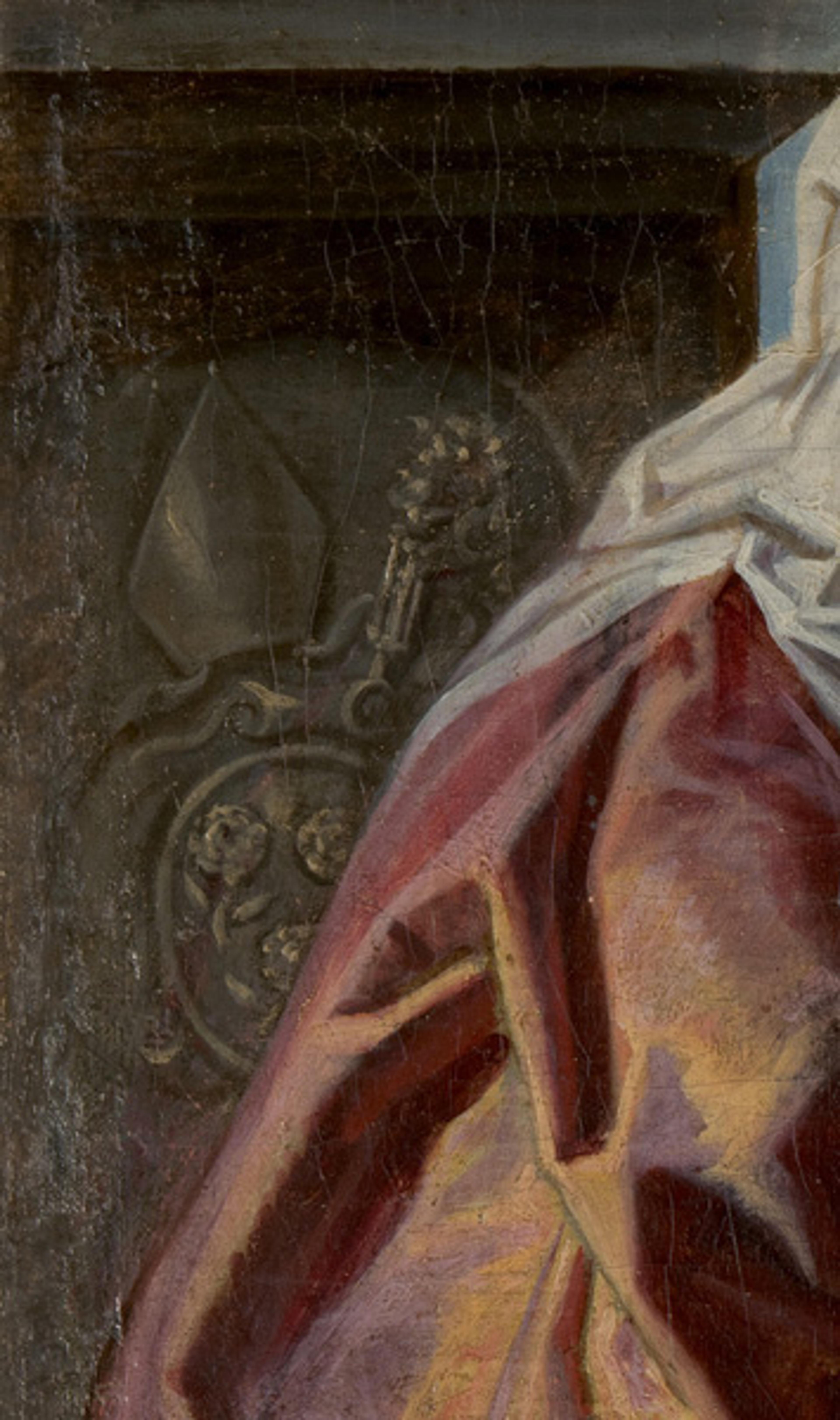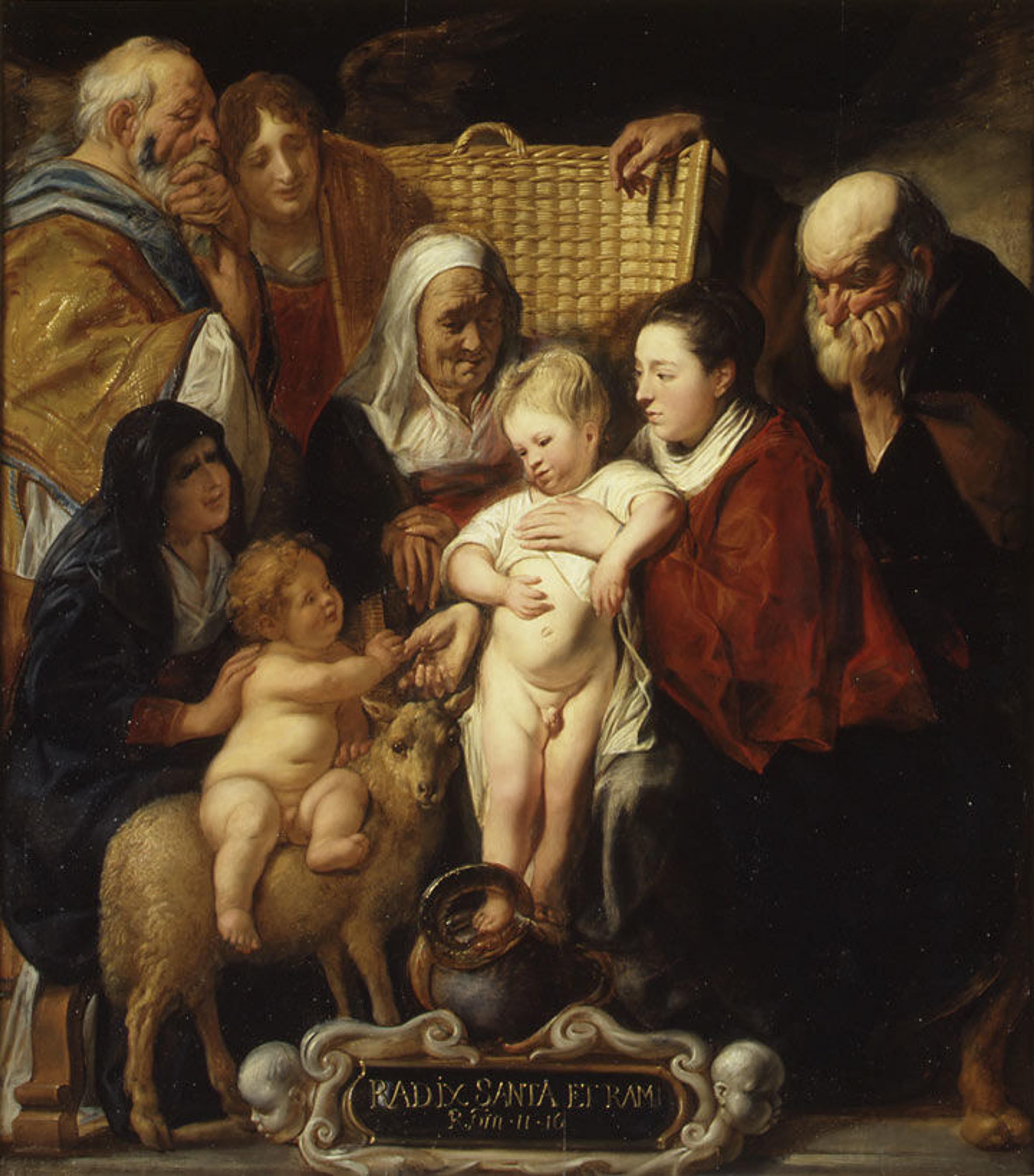Now on View: A New Discovery by an Old Master

Jacob Jordaens (Flemish, 1593–1678). Saint Martin Healing the Possessed Man (before cleaning), 1630. Oil on canvas, 48 1/4 x 34 1/2 in. (122.5 x 87.5 cm). Private collection
«A few months before I began work at The Met, I attended the preview for the winter Old Masters sale at Sotheby's. There, one painting immediately caught my eye: Saint Martin Healing the Possessed Man, by the Flemish artist Jacob Jordaens (1593–1678). This work was that rarest of things in the world of Old Masters—a completely new discovery. My enthusiasm lingered with me long after the sale was complete as I wondered what had become of Jordaens's vivid scene of exorcism, which was clearly well preserved despite a layer of discolored varnish. Several months and a few phone calls later, I was delighted to be able to bring this painting to the galleries of the Department of European Paintings on a generous six-month loan from its new owner, as one of my first projects at The Met.»
By the time the painting was installed in gallery 630, a thorough cleaning had transformed its appearance. Suddenly I could see how skillfully Jordaens distinguished between the textures of velvet, shot silk, and brocade in the rich clothing of his figures. Other details also came back to life, such as the light glinting off the spurs of the turbaned man to the far right, and the languid beauty of the young acolyte to the left of the saint.

Saint Martin Healing the Possessed Man (after cleaning)
One of the most exciting discoveries was an overpainted coat of arms on the base of the column to the far left of the painting. We were able to identify this as the coat of arms of Antonius de Roore, a Benedictine abbot who was almost certainly the patron of Jordaens's first independent altarpiece.
Left: Saint Martin Healing the Possessed Man (detail view of the coat of arms)

Like the Sotheby's picture, Jordaens's first altarpiece—now at the Royal Museum of Fine Arts in Brussels—depicts Saint Martin exorcising a demon from the body of a possessed man. The shared subject matter and connection to De Roore suggest that the picture on loan to us was most likely a highly finished "mock-up" of the final altarpiece that the artist submitted for the approval of his patron. Jordaens apparently received some criticism, since the composition is altered in the final altarpiece and the saint appears on the same level as the possessed man. In the version now on view at The Met, he instead appears high up, on a dais. To the saint's right stands an older monk whose naturalistic appearance suggests a portrait, perhaps even a depiction of the patron Antonius de Roore himself.
Another painting by Jordaens, The Holy Family with Saint Anne and the Young Baptist and His Parents, was one of the earliest artworks to enter The Met collection after the Museum's founding in 1870. While The Met has a second painting by him (likewise depicting the Holy Family) and several drawings, we lack a major narrative composition of the kind for which Jordaens was celebrated in his day. Flemish Baroque altarpieces, among the greatest artistic achievements of the 17th century, are incredibly scarce in North American museums.

Jacob Jordaens (Flemish, 1593–1678). The Holy Family with Saint Anne and the Young Baptist and His Parents, early 1620s, modified 1650s. Oil on wood, 66 7/8 x 59 in. (169.9 x 149.9 cm). The Metropolitan Museum of Art, New York, Purchase, 1871 (71.11)
The loan of Saint Martin Healing the Possessed Man, which continues through December 16, 2016, has thus helped us to tell a more complete narrative of an important moment in art history—when painters like Jordaens, Rubens, and Van Dyck devised breathtaking figural compositions in the service of a resurgent Catholic Church. Even a collection as encyclopedic as The Met's has its gaps, but thanks to generous lenders we're sometimes able to fill these in with a rediscovered masterpiece.
Related Link
Now at The Met: M. Alan Miller, "Saving an Altarpiece (Part I): Coming Apart at the Seams" (October 3, 2016)
Adam Eaker
Associate Curator Adam Eaker studied Art History at Yale University and Columbia University, where he received his PhD in 2016. A specialist in Northern European and British painting of the 16th through the 18th century, he was previously a visiting scholar at the Rubenianum Research Institute for Flemish Art in Antwerp. Before joining the staff of The Met, he served as an Anne L. Poulet Curatorial Fellow and subsequently guest curator at the Frick Collection, where he co-curated the exhibition Van Dyck: The Anatomy of Portraiture (2016).